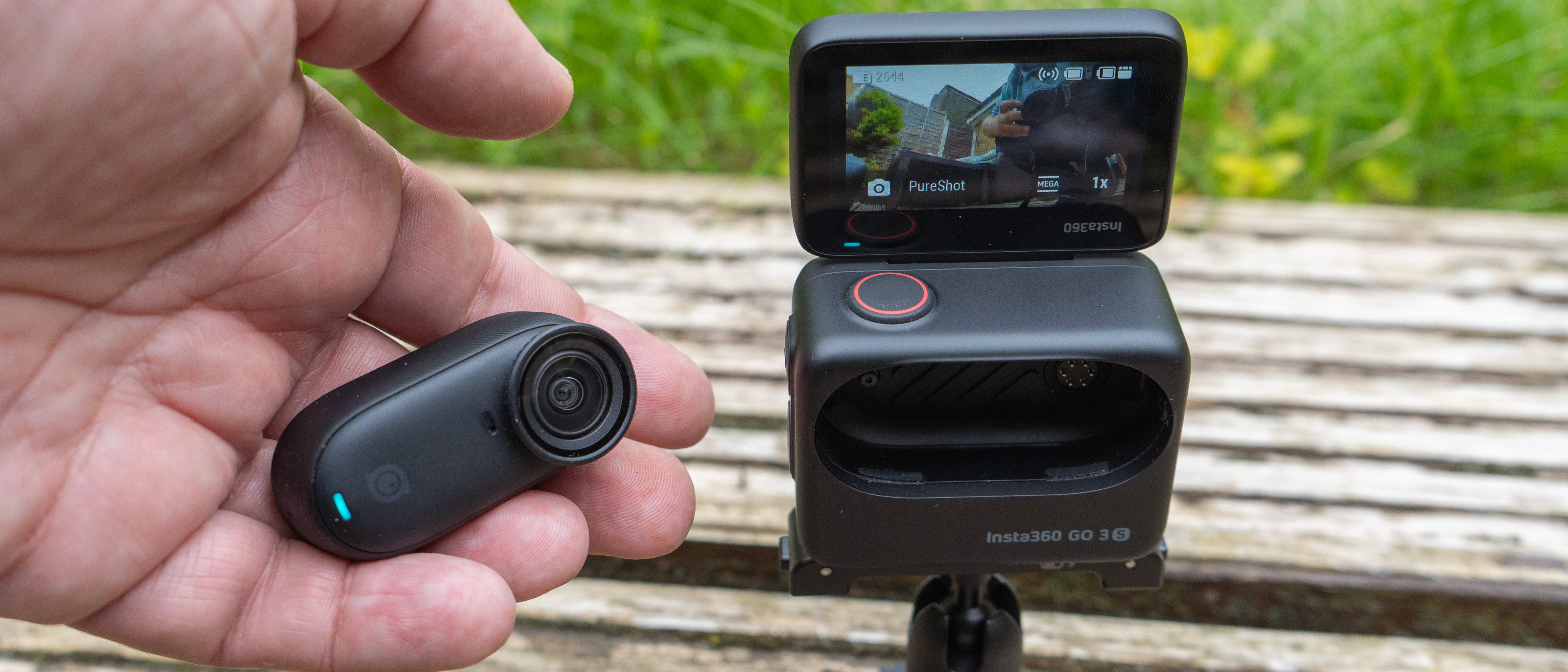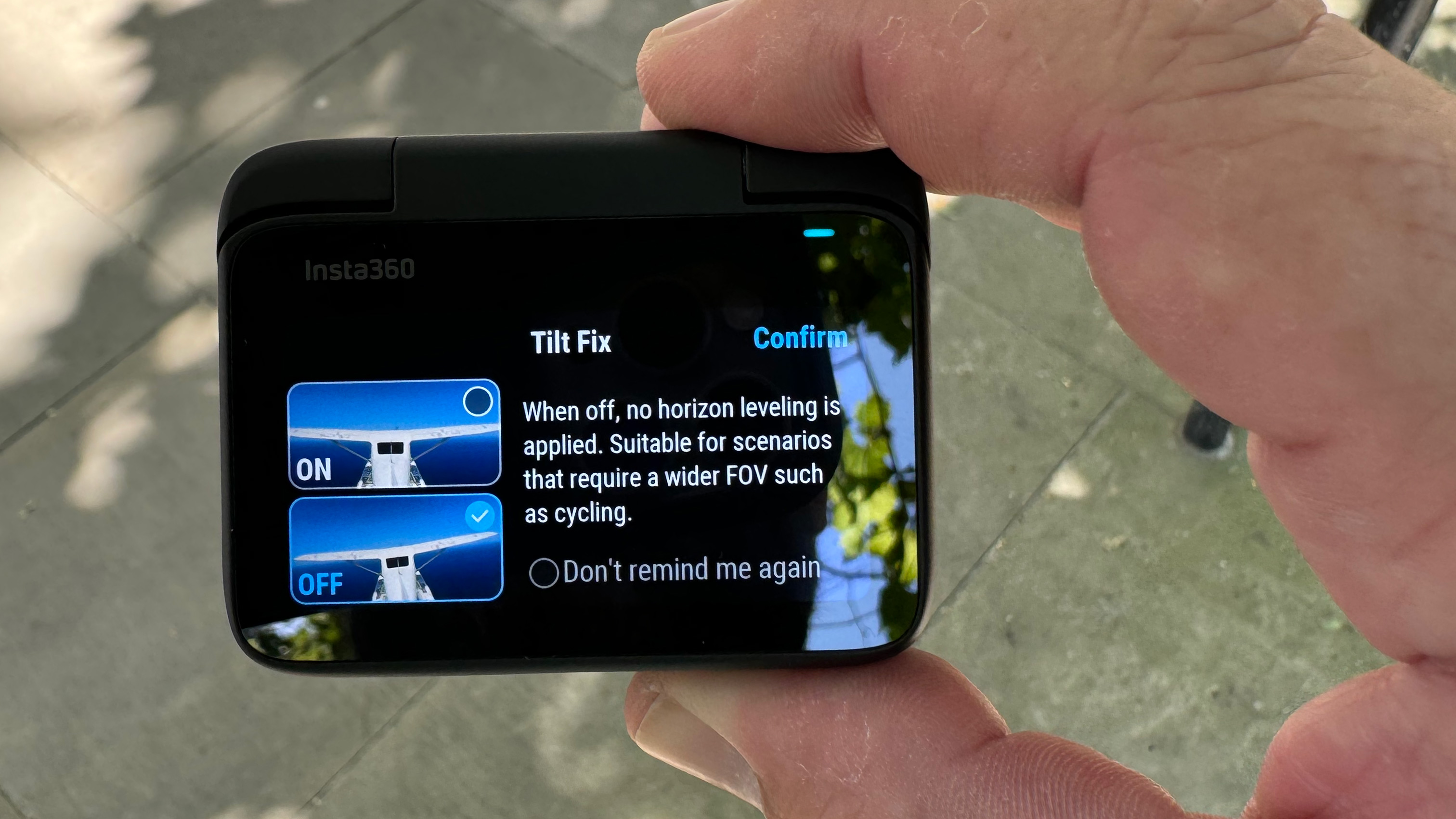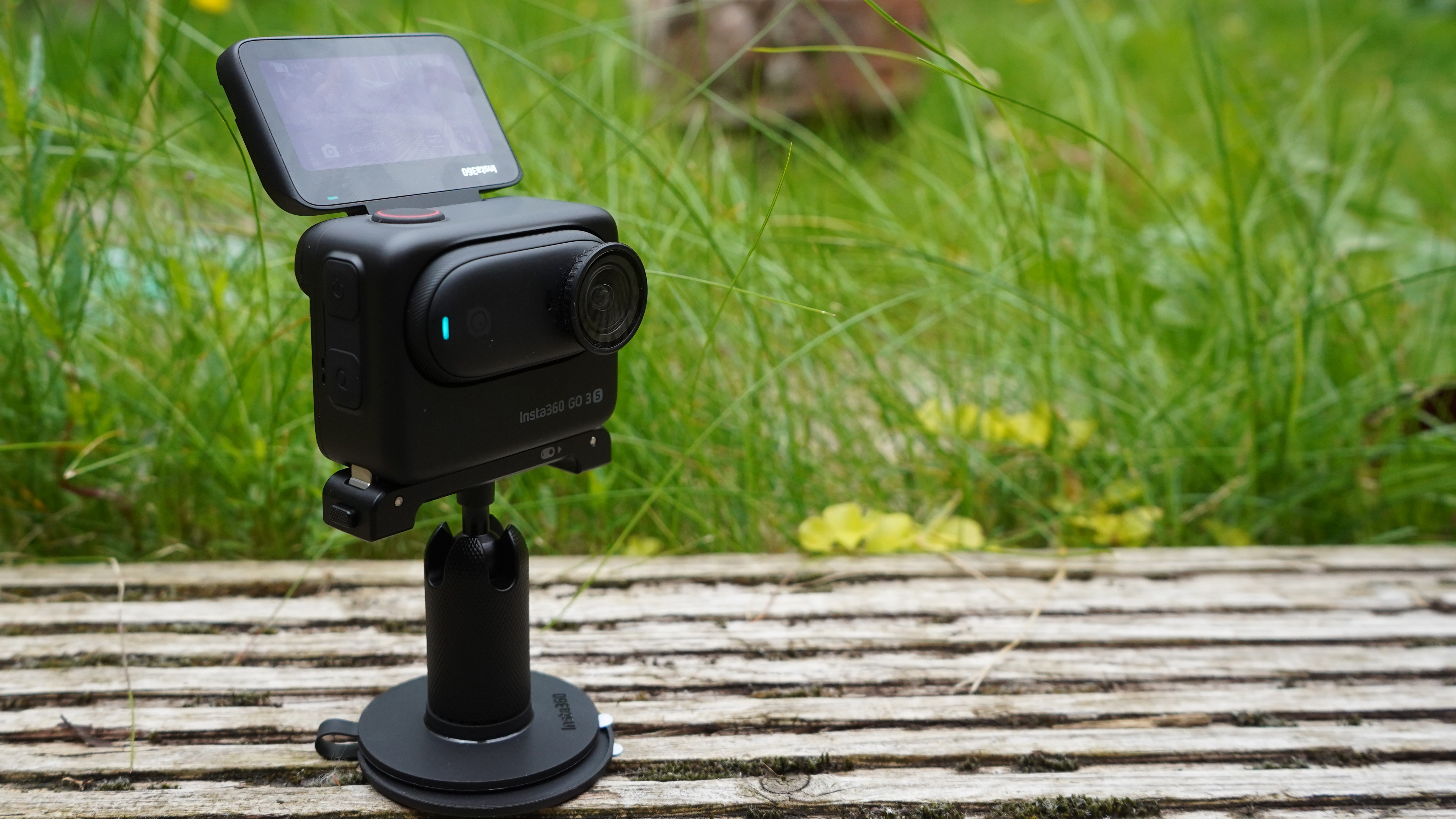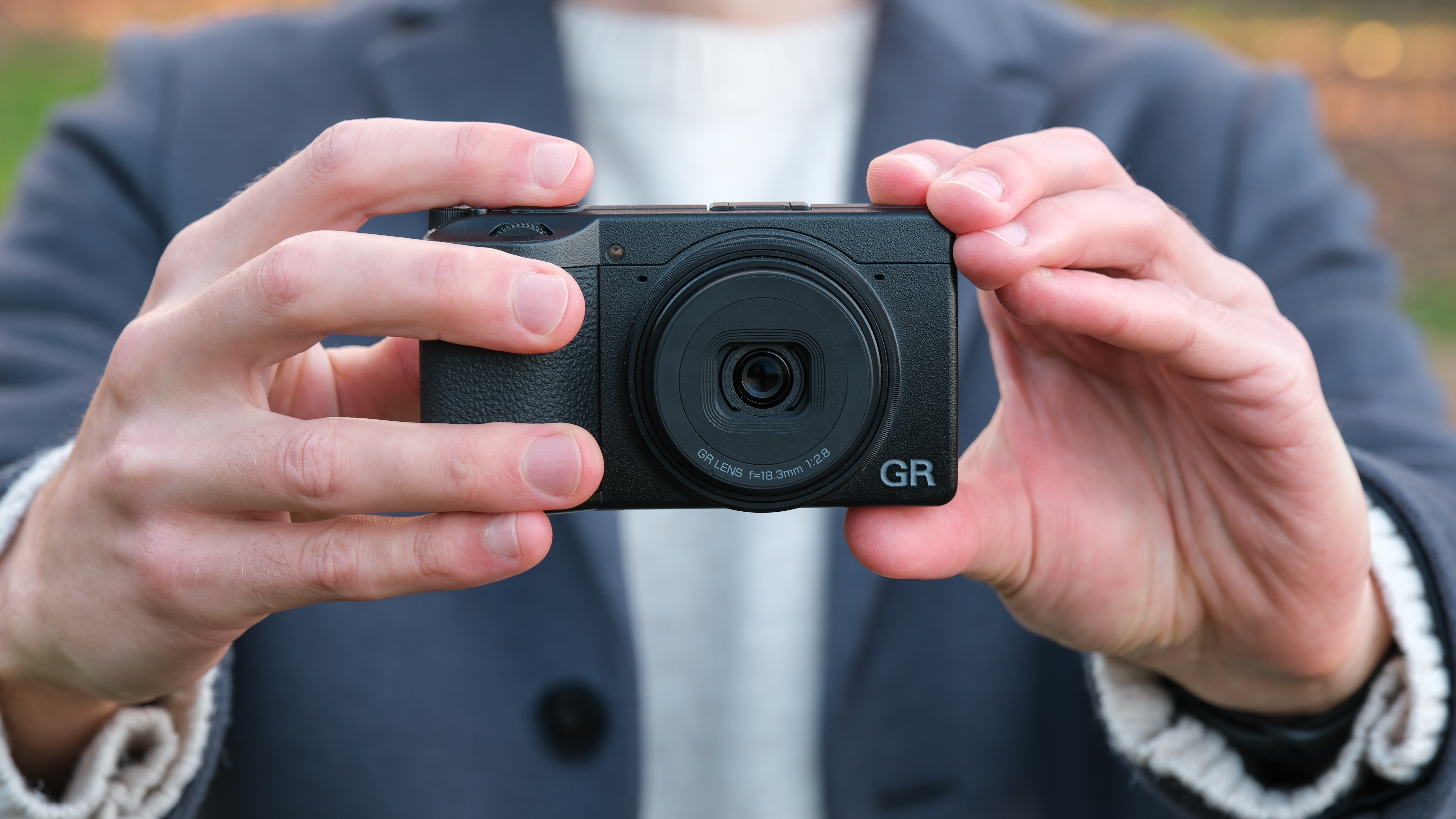Digital Camera World Verdict
As you might expect for such a tiny device, it is at once brilliant and imperfect. 4K Dolby Vision video output is great, and the discrete wearability is great, but at the same time, the narrower field of view than the predecessor isn't ideal. Nevertheless, this is truly an action camera which can get shots your phone can't and work in ways which verge on the futuristic.
Pros
- +
4K video is great
- +
Amazing remote control capability
- +
Apple 'Find My' compatibility
- +
Stunningly versatile device can change how you make videos
Cons
- -
Slightly weightier than its predecessor
- -
Sometimes confusing use of red charge/record light on camera
- -
The easy clip feels a bit cumbersome
- -
Stabilization could be better, especially in low light
Why you can trust Digital Camera World
The Insta360 Go series is a tiny thumb-sized camera which can make other action cameras seem positively chunky, and offers genuinely different possibilities for creators.
It can be worn surprisingly discretely on the body – typically the chest thanks to a magnet chest and an accompanying pendant and, in my testing, made capturing personal perspectives impressively easy.
For me at least, it's incredible that the Insta360 Go 3S isn't called the 'Go 4K' – not only is it the 4th iteration but 4K is a significant feature. I actually asked why, but there is a reason I'm in journalism, not branding! It was pointed out that the camera fits in the same ActionPod (that's the name for the housing) so there's the continuity Insta360 are successfully getting across in their name.
That 'ActionPod' – a housing similar in size to a typical action camera – boasts a full-size touch screen. That's good, as the camera itself – when detached – has nothing but a lone indicator LED – whereas the touchscreen offers easy access to all the features you'd expect of a modern action camera.
Moreover it's a flip screen, so the device can be used for vlogging with the monitor facing the user – this is has in common with its sibling Insta360 AcePro action camera and a lot of bigger vlogging cameras.
So what do I make of this detachable action camera / vlogging camera?
Price
At launch the Insta360 Go 3S is being sold for £399.99 / £349.99 which is broadly similar to premium action cameras, including a lens guard, the ActionPod (of course), a Pivot Stand and an Easy Clip. There are Midnight Black and Arctic White versions available (and $6.99 will buy you a custom skin for the camera itself, making it look more like a badge than a camera).
The best camera deals, reviews, product advice, and unmissable photography news, direct to your inbox!
Insta360 Go 3S Specification
| Aperture | f/2.8 | Row 0 - Cell 2 |
| Focal length | 16mm EFL (Go 3 was 11mm) | Row 1 - Cell 2 |
| Video resolution | 4K at 30fps | Row 2 - Cell 2 |
| Slow motion | 2.7K at 100fps / 1080P at 200fps | Row 3 - Cell 2 |
| Stills resolution | 4000 x 2250 max | Row 4 - Cell 2 |
| ISO range | 100-3200 | Row 5 - Cell 2 |
| Waterproof | 10m / 33ft (double Go 3) | Row 6 - Cell 2 |
| Weight | Camera: 39.1g, Pod 96.3g (1.38oz + 3.4oz) | Row 7 - Cell 2 |
| Battery life | Camera: 38min (+Pod 140min) | Row 8 - Cell 2 |
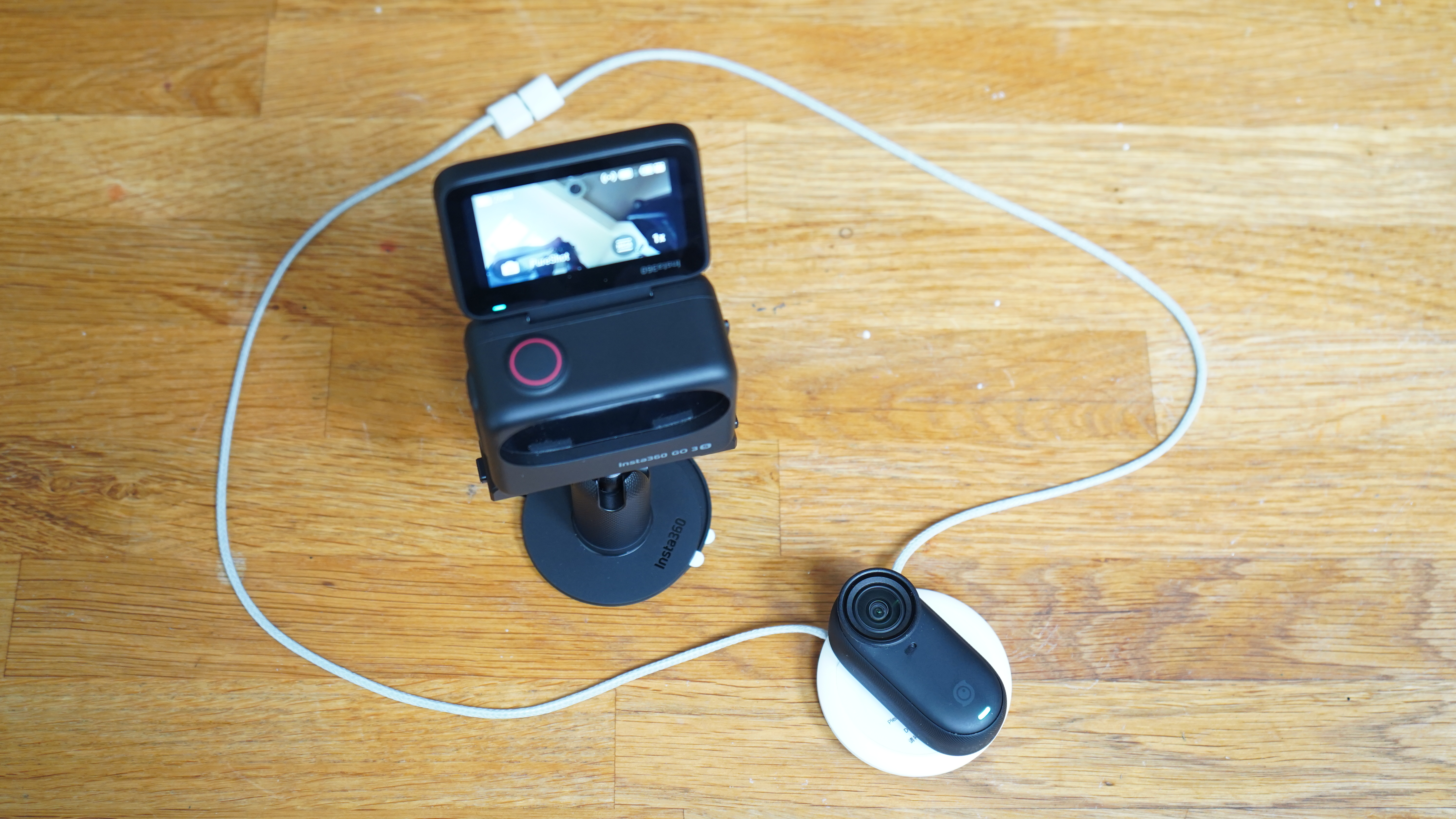
Insta360 Go 3S Build and handling
There were more substantial changes in the history of the 'Go' as a product; earlier versions came with an AirPod-style case and relied on a phone as a monitor. The change this time has been all about the camera and not about the ActionPod.
it is important, though, to understand that Insta360 are offering a unique approach to the action camera with this device. In the housing, you have a device that's basically like a GoPro or equivalent – even more comparable to Insta360's Ace Pro since it has a flip-up back screen. That's a pretty nifty solution for vloggers who often can't manage with the tiny front displays on GoPros or the DJI Osmo, and echos the solution on 'proper' vlogging cameras.
The camera also boasts all the key image stabilization features we've come to associate with the best premium action cameras, including horizon stabilization.
The difference is the ability to pop the camera out and attach it, almost magically, to your clothes. What seems even more magical is that the housing keeps on working – you can still see a live preview on the screen, so you now have a remote monitor in your pocket.
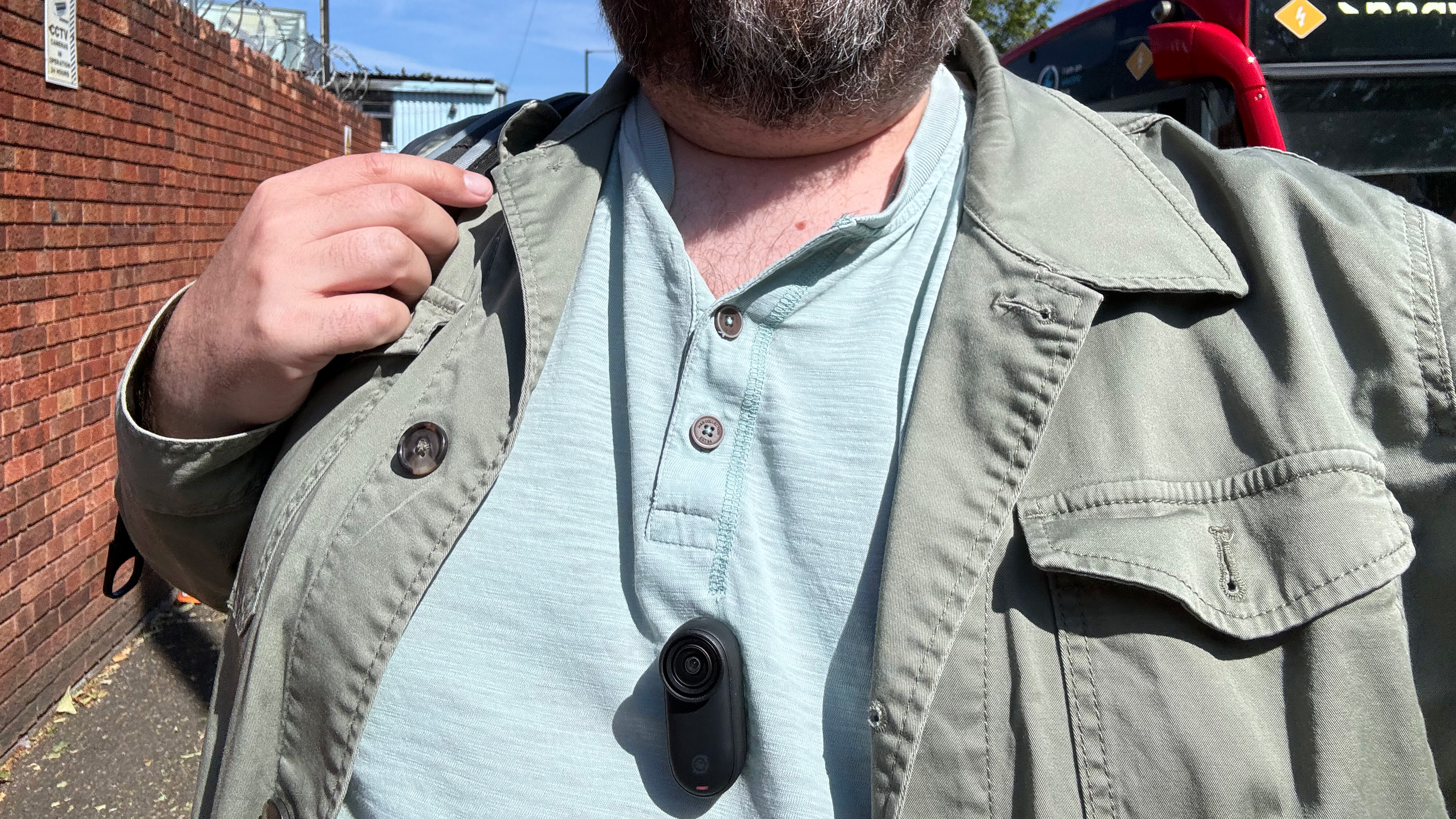
This gives you the means to shoot all kinds of POV (Point of View) shots, and the pendant you wear around the neck is surprisingly comfortable though on a, well, let's be honest here, fat mane like myself there is a bit of bagginess in the middle of the chest area (I tend to pick loose T-Shirts) and while the magnet is a good wight to keep the camera stable, it might not keep the lines of loose clothes ideal.
The camera is also held in the housing with magnets and kept in place with a clip and release button which is all surprisingly robust in my field testing – mostly walking so far. At the base there are clips for a magnetically guided clip mount which is also great for setting up camera positions and popping it in and out.
Software also plays a big part of the system's integration. Despite the detachability and flip screen, the device is waterproof to 33ft/10m without extra casing, but there is no SD card slot built-in. Instead an additional QuickReader (which fits USB-C or Lightning, and has a MicroSD card slot) can download images from the camera fast, or you can simply use the app and cope with the limitations of Wi-Fi/Bluetooth speed.
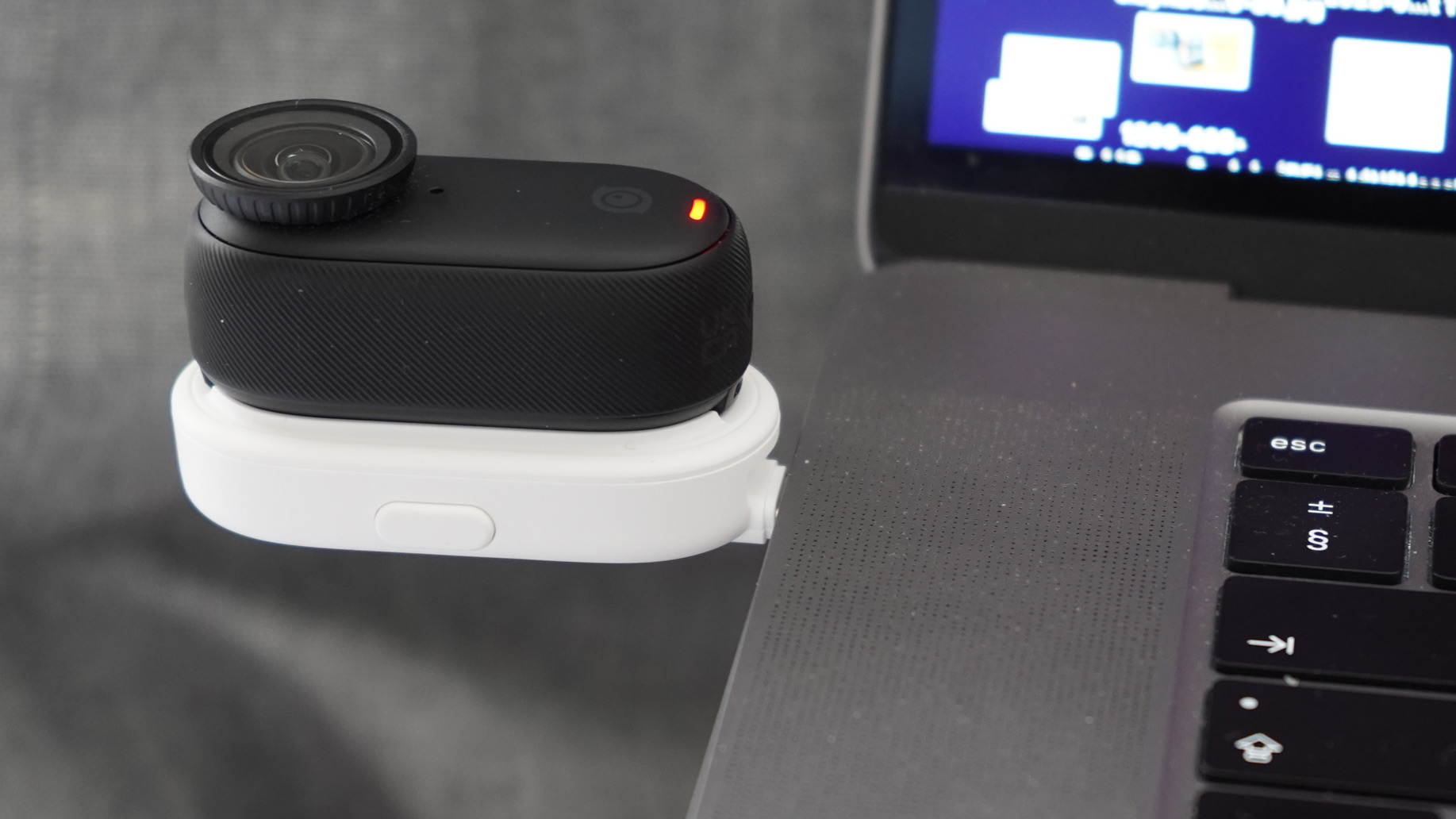
I'm not how sure pros will enjoy the fact they need to have the main unit charged and powered up to be able to use the feast file transfer cradle, but at least this way files can be seen in the OS.
Insta360 Go 3S: Performance
In use, the camera is so brilliant as to be occasionally confusing. Partly that's because the only indicator on the camera itself is the LED at the base of the camera, just above an area which is a clickable button. My problem with it was that it is red to indicate charging in the base, and slow red flashing to indicate recording, and it's a little too easy to accidentally assume the one instead of the other.
Software-wise, the system is reasonably responsive, though these things can always be quicker. It is certainly not too laggy when swiping around, but can take a few seconds to wake.
Optically, to my mind, the field of view could have been wider. I would have liked the option to have a wider perspective, even if it meant recording with something of a fish-eye view. That would seem plausible given that Insta360 are offering the option to improve stabilization in software after-the-fact.
Instead, Insta360 seem to have concentrated on eliminating this effect which has advantages – it's clearly a lot quicker to get video straight out if the social approach is what matters to you.
Battery life, incidentally, wasn't an issue for me in initial testing, though I did keep the housing with me and pop it back in it all the time, just as I do with my AirPods. I did, however, seem to accidentally trigger the camera a couple of times and fill several gig of the memory – also slightly warming my pocket!
Insta360 Go 3S: Sample Video
The principle lesson of the sample video is that the camera copes well but there is a risk that the field of view can seem a bit compressed if you get the settings wrong. More obviously, in lower light, the camera struggled (and the EIS really struggled with leaves). In the daylight, though, it is impressive given the tiny size, and the sound is OK, though picks up a lot of background.
Insta360 Go 3S: Sample Photo
The arrival of RAW+Jpeg as well as the higher image resolutions makes this camera more useful than its predecessor, and using bracketing can ensure a useful shot.
Insta360 Go 3S: Overall verdict
This is an excellent device, and one which most action camera customers can now seriously consider as an alternative to the typical box that is a DJI Osmo Action or a GoPro. After all, it can do that and a bit more, as long as the light is right.
However, it's fair to say that its cunning means it runs into a few issues which slightly impact on its versatility, and the one which is most surprising is the relatively narrow field of view which – I realised – is far better for working in portrait (social-media format) than horizontal. It's still fine, though, but not ideal in tight spaces.
The fact that getting pictures onto a computer at high speed not only requires an accessory but also seems to require the main unit to be powered up even if it is not attached seemed a little strange to me, but there are a few of those quirks to get used to in exchange for the flexibility of that tiny camera.
Ultimately, though, I feel like the Go 3S is really onto something. It addresses the needs of most users, taking the concept out of the niche to a stage where the material pulled from it is useful in most aspects of content making, from quick TikToks to serious filmmaking. Physics clearly poses some restrictions, but – where the phone is undoubtedly biting away at the GoPro – it feels like this thumb-sized camera will be safe for a good bit longer now.
| Features | With 4K, the live remote control and smooth app syncing, not to mention Find My, features are extensive | ★★★★★ |
| Design | Overall, the concept is brilliantly executed given the limitations physics imposes; everything feels robust and the pendant is comfortable | ★★★★★ |
| Performance | The system has some issues in low-light and with image stabilization (the later may be improved with firmware) | ★★★½☆ |
| Value | Because of regular savings on premium action cameras which are better in low light, it is difficult to say this is great value unless you need the POV flexibility – in which case there isn't really any competition. | ★★★★☆ |
✅ Buy this if...
- You want video content from a body-worn camera
- You want a very flexible camera
- You're looking to try things you can't do with your phone
🚫 Don't buy this if...
- You need a camera with good low-light capabilities
- You want to be able to go straight to a MicroSD card
How I tested the Insta360 Go 3S
I regularly test action cameras, and wrote the guides to the best action cameras and the best 360-degree cameras. I tested this camera by taking it out on a number of different days wearing it using the pendant and taking photos and videos inside and outside the ActionPod housing.
I use the Go 3S in as many lighting conditions as possible – day, night, artificial, natural. I also made sure to test the microphone by talking to the camera while it was in my hands, and in varying winds.

With over 20 years of expertise as a tech journalist, Adam brings a wealth of knowledge across a vast number of product categories, including timelapse cameras, home security cameras, NVR cameras, photography books, webcams, 3D printers and 3D scanners, borescopes, radar detectors… and, above all, drones.
Adam is our resident expert on all aspects of camera drones and drone photography, from buying guides on the best choices for aerial photographers of all ability levels to the latest rules and regulations on piloting drones.
He is the author of a number of books including The Complete Guide to Drones, The Smart Smart Home Handbook, 101 Tips for DSLR Video and The Drone Pilot's Handbook.
